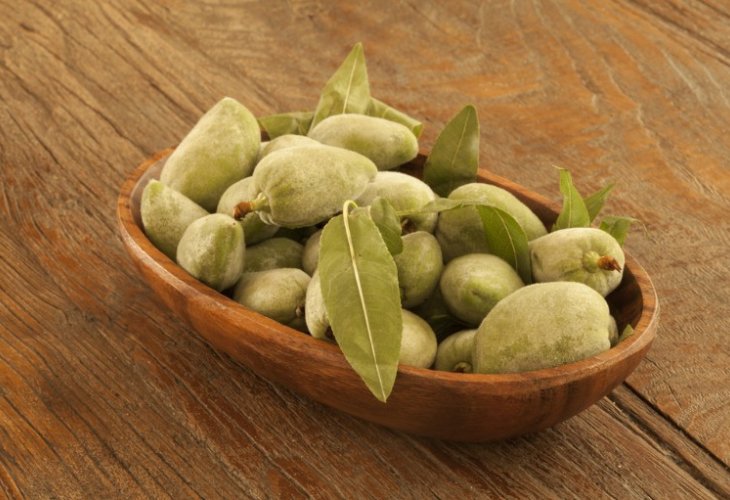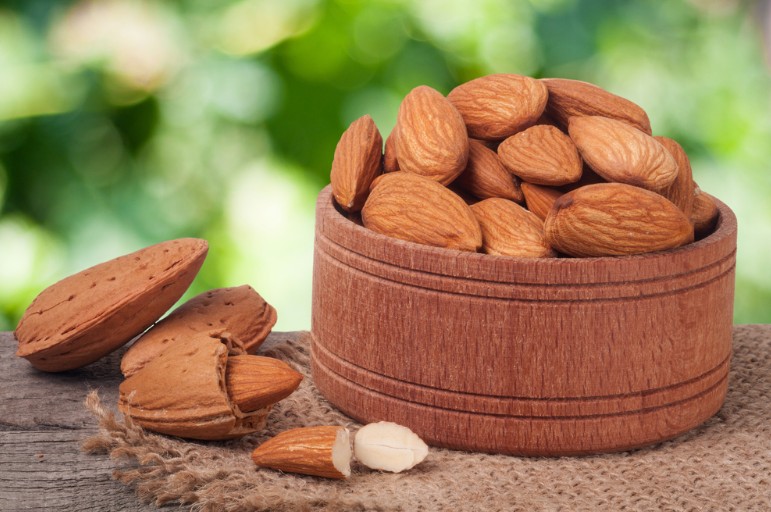Kosher Green Almonds - What's Important to Remember?
Discover the kashrut differences between green and brown almonds, why they exist, and why their blessings differ.
 (Photo: shutterstock)
(Photo: shutterstock)This time we might open the article under the headline "Exposé" because for many of us, this will indeed be a surprise, and not necessarily a pleasant one... as we've diligently collected some misconceptions about these innocent almonds.
Maybe for you too, it's a once-in-a-while experience from childhood days, when Grandma would return from the market with a bucket full of velvety, greenish, round fruit, convincing you to eat it whole with its skin, because that's how it's healthier and tastier... But her fussy grandchildren weren't exactly convinced, preferring to remove the green peel and reach the ivory-white, sweet, and moist interior. Even today, years later, this fruit hasn't lost its appeal and is still considered desirable, available in markets for only a few days each year. Except now the scenery is more impressive – market stalls have been replaced by natural food stores, and buckets have been replaced by mesh packaging, containing fresh green almonds.
Green almonds have always provided extensive ground for halachic authorities to discuss, starting with how they should be eaten – whether whole with their peel, or just the green skin and white interior while separating the middle brown layer, and if so, whether it's permissible to peel them on Shabbat without violating the prohibition of "threshing." There's also an interesting discussion about "what blessing to recite," where they ruled that the blessing for green almonds should be "shehakol," even though they grow on trees, because trees weren't planted with the intention of eating their fruits while green.
* * *
The Israeli almond, particularly the "Hassan" variety, is considered the best, and anyone who knows a little about almonds can quickly identify the Israeli one in the bunch. It's easy to recognize an Israeli almond, both by its elongated shape and by the special brown shade of the almond. Moreover, the Israeli almond is characterized as the best for roasting, and most roasting houses in Israel prefer to roast only Israeli almonds, while American almonds are designated for sale as natural or blanched, sliced, and slivered. Therefore, it's no wonder that as soon as the season begins, large roasting houses rush to close deals with growers and packing houses to secure huge quantities for the entire year. So every year, at the beginning of the season, which stretches during this period, there's a kind of large vacuum of who will win the good almonds... and not just the good ones, but also those with mehadrin kashrut standards.
But it's not enough that demand is high, and some growers feel they are strong enough not to comply with all the strict kashrut procedures, they even allow themselves to have leakage of almonds from orchards that have the biennial orlah problem. Therefore, all those roasting houses and marketing chains that are not managed by a strong kosher supervision body suffer greatly from this.
As a result, growers prefer to market the almond when it's dry, and for that purpose, they will leave the green almonds on the tree until their green peel falls off naturally, while the inner yellow peel hardens and becomes brown wood. But all this is on condition that during harvest everything goes smoothly and inexpensively, because harvesting is done mechanically using a shaker, which is like a tractor with long arms that vigorously shakes the tree until all its fruits fall to the ground. However, when there's difficulty for the tree, and it cannot withstand the shaking, harvesting will be done manually. And when does a tree have difficulty? When it's young – within three or four years of its life...
 (Photo: shutterstock)
(Photo: shutterstock)This has created a reality that is almost standard in most orchards. Every mature tree, over three or four years old, is shaken with a shaker, and its fruits will wait until they dry and are marketed as dry almonds. Meanwhile, young trees, which require manual harvesting, will be harvested while their fruits are still green, so from the outset, the tree is planted with the intention that in its first years it will be harvested as green almonds. In parenthesis, it's worth emphasizing that this is not an absolute rule to the extent of changing the blessing of the almond, and is subject to halachic discretion.
And if we translate this data into practical halacha, a grim picture emerges: there are hardly any green almonds that don't have a reasonable concern of orlah, and at most, they have a lesser concern that can be discussed, which is the biennial issue (young trees that grew in nurseries and were transferred to the orchard during the orlah years, and it's possible that three years have passed since they were planted in the nursery, but not since they were planted in the orchard), but they are certainly not mehadrin.
However, if you encounter green almonds bearing good kashrut certification, they will certainly be neta revai almonds (from the fourth year), for which the kosher certification body has ensured proper redemption, as they are forbidden to eat without redemption.
Finally, even after we've internalized that we can't buy green almonds from the market without good kashrut certification, and perhaps it's not worth looking because we won't find any, and it's also clear to us that it won't help at all if we tithe all our market purchases as a stringency, because the orlah problem cannot be resolved – it's time to also give a platform to the dry almond, and remind that it too requires very good kashrut certification, not only because of the biennial issue we might encounter, but mainly because it too, like its neighbors the seeds and peanuts, suffers greatly from the tithing issue, which exists after sorting and requires a watchful eye. So please, be diligent about this.

